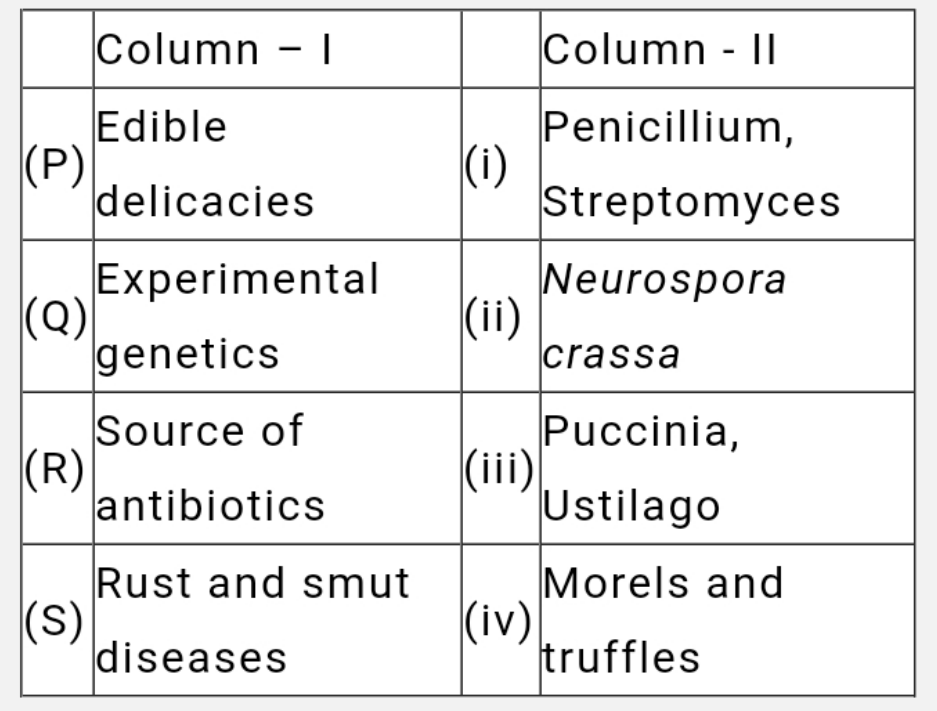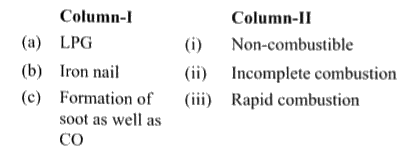Match Column -I with column-II and select the CORRECT option from the codes given below .
Column - IColumn - II(P) Autopolypoidy(i)2n+1(Q) Trisomy(ii)AAAA(R) Allopolyploidy(iii)AABB(S) Nullisomy(iv)2n−2
P-(ii), Q-(i), R-(iii), S-(iv)
P-(iv), Q-(i), R-(ii), S-(iii)
P-(ii), Q-(iv), R-(iii), S-(i)
P-(ii), Q-(i), R-(iv), S-(iii)
The correct Answer is:A
To solve the matching question, we need to analyze each term in Column I and find its corresponding definition or description in Column II.
1. Identify Autopolyploidy (P):
- Autopolyploidy refers to a condition where an organism has multiple sets of chromosomes derived from the same species.
- In terms of chromosome number, if the diploid number is represented as "2n", then an autopolyploid would have "AAAA" which indicates multiple copies of the same chromosome set.
- Match: (P) Autopolyploidy → (ii) "AAAA"
2. Identify Trisomy (Q):
- Trisomy is a genetic condition where an individual has three copies of a particular chromosome instead of the usual two.
- This can be represented as "2n + 1", where "n" is the haploid number.
- Match: (Q) Trisomy → (i) 2n + 1
3. Identify Allopolyploidy (R):
- Allopolyploidy involves having multiple sets of chromosomes that are derived from different species.
- In terms of chromosome representation, if two different species contribute to the chromosome sets, it can be represented as "AABB".
- Match: (R) Allopolyploidy → (iii) "AABB"
4. Identify Nullisomy (S):
- Nullisomy is a condition where both copies of a particular chromosome are missing.
- This can be represented as "2n - 2", indicating the loss of two chromosomes from the diploid set.
- Match: (S) Nullisomy → (iv) 2n - 2
Final Matches:
- (P) Autopolyploidy → (ii) "AAAA"
- (Q) Trisomy → (i) 2n + 1
- (R) Allopolyploidy → (iii) "AABB"
- (S) Nullisomy → (iv) 2n - 2
Conclusion:
The correct option based on the matches is:
- Option 1: P → ii, Q → i, R → iii, S → iv
- Autopolyploidy refers to a condition where an organism has multiple sets of chromosomes derived from the same species.
- In terms of chromosome number, if the diploid number is represented as "2n", then an autopolyploid would have "AAAA" which indicates multiple copies of the same chromosome set.
- Match: (P) Autopolyploidy → (ii) "AAAA"
- Trisomy is a genetic condition where an individual has three copies of a particular chromosome instead of the usual two.
- This can be represented as "2n + 1", where "n" is the haploid number.
- Match: (Q) Trisomy → (i) 2n + 1
- Allopolyploidy involves having multiple sets of chromosomes that are derived from different species.
- In terms of chromosome representation, if two different species contribute to the chromosome sets, it can be represented as "AABB".
- Match: (R) Allopolyploidy → (iii) "AABB"
- Nullisomy is a condition where both copies of a particular chromosome are missing.
- This can be represented as "2n - 2", indicating the loss of two chromosomes from the diploid set.
- Match: (S) Nullisomy → (iv) 2n - 2
- (P) Autopolyploidy → (ii) "AAAA"
- (Q) Trisomy → (i) 2n + 1
- (R) Allopolyploidy → (iii) "AABB"
- (S) Nullisomy → (iv) 2n - 2
The correct option based on the matches is:
- Option 1: P → ii, Q → i, R → iii, S → iv
Topper's Solved these Questions
Similar Questions
Knowledge Check
Match Column - I with Column - II and select the CORRECT option form the codes given below
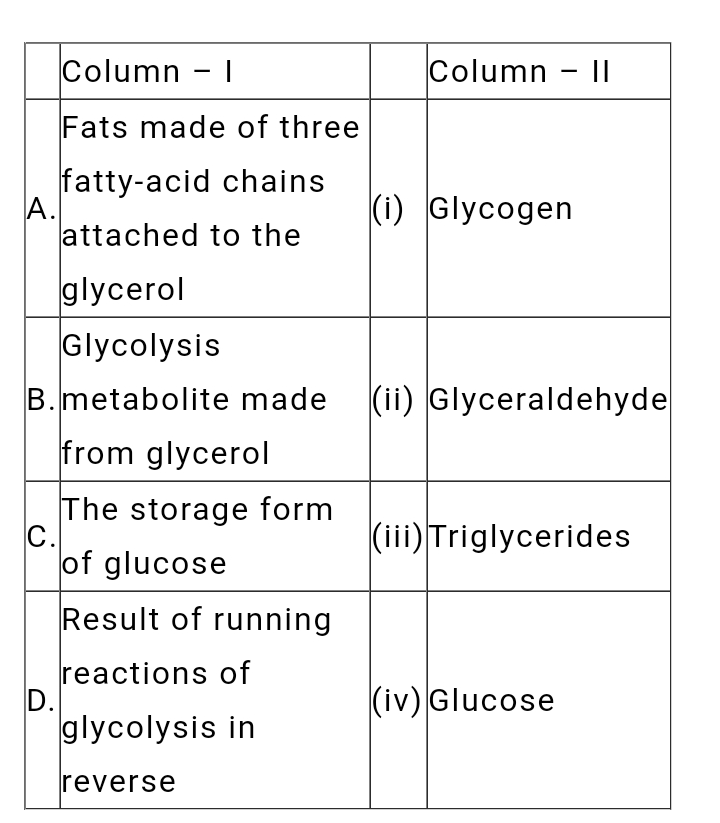 AA - (iv) , B - (ii) , C - (i) , D - (iii)BA - (iii) , B - (ii) , C - (i) , D - (iv)CA - (iv) , B - (iii) , C - (i) , D - (ii)DA - (i) , B - (ii) , C - (iii) , D - (iv)
AA - (iv) , B - (ii) , C - (i) , D - (iii)BA - (iii) , B - (ii) , C - (i) , D - (iv)CA - (iv) , B - (iii) , C - (i) , D - (ii)DA - (i) , B - (ii) , C - (iii) , D - (iv)Match Column - I with Column - II and select the CORRECT option form the codes given below
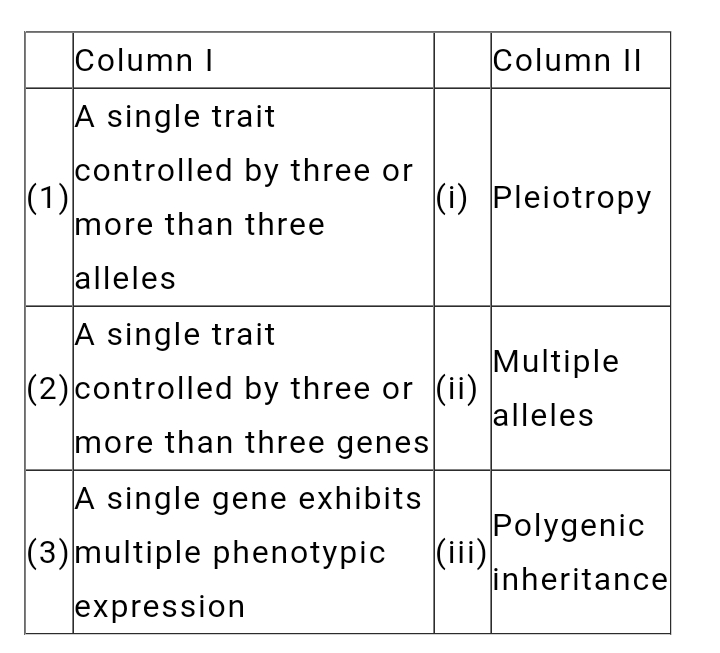 A1 - (ii) , 2 - (iii), 3 - (i)B1 - (iii) , 2 - (ii), 3 - (i)C1 - (i) , 2 - (ii), 3 - (iii)D1 - (ii) , 2 - (i), 3 - (iii)
A1 - (ii) , 2 - (iii), 3 - (i)B1 - (iii) , 2 - (ii), 3 - (i)C1 - (i) , 2 - (ii), 3 - (iii)D1 - (ii) , 2 - (i), 3 - (iii)Match Column-I with Column-II and select the correct option from the codes gives below
 AA-iv, B-I, C-ii, D-iiBA-iii,B-I,C-iv,D-iiCA-iii, B-iv, C-I,D-iiDA-iv,B-ii,C-I,D-iii
AA-iv, B-I, C-ii, D-iiBA-iii,B-I,C-iv,D-iiCA-iii, B-iv, C-I,D-iiDA-iv,B-ii,C-I,D-iii
Match the column I with column II and select the correct option from the codes given below
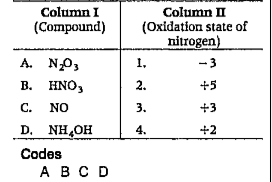
View SolutionMatch the column I with column II and select the correct option from the codes given below
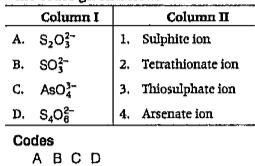
View SolutionMatch the column-I with column-II and select the correct option from the codes given below.
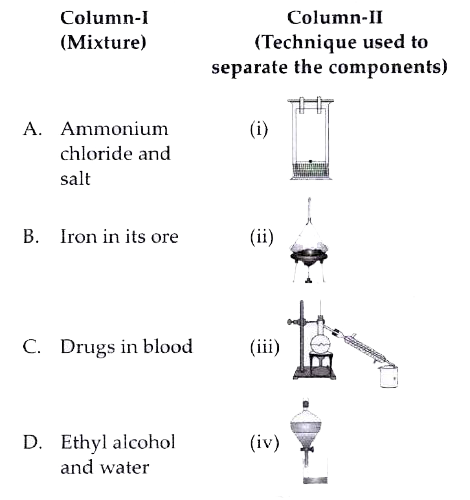
View SolutionMatch the Column I with Column II and select the correct option from the codes given below.

View SolutionMatch the Column I with Column II and select the correct option from the codes given below.
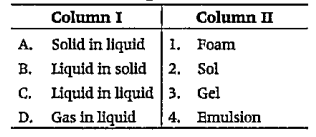
View Solution

